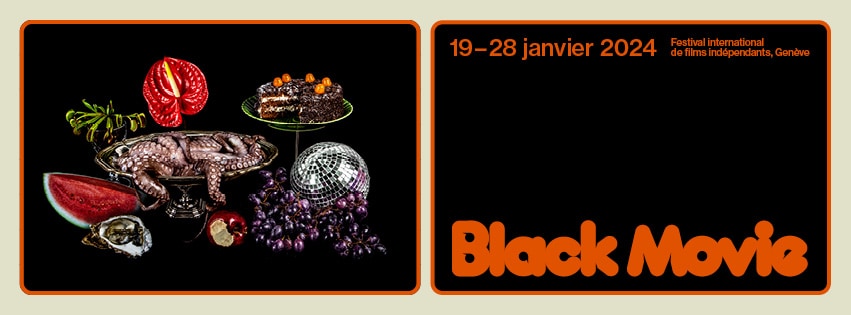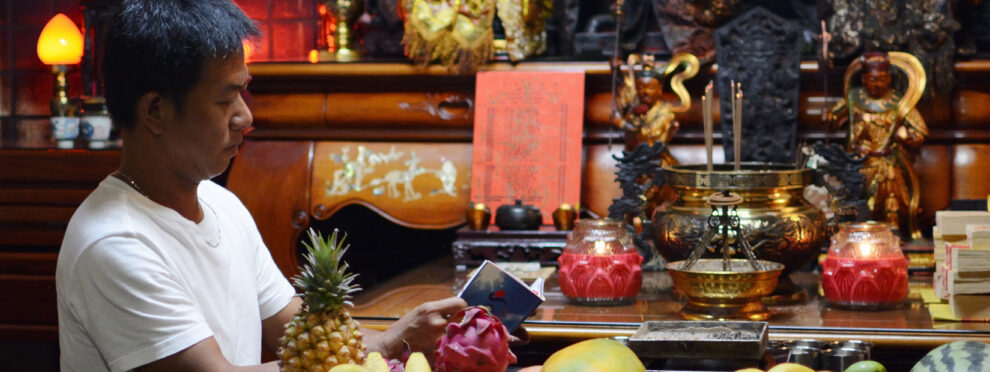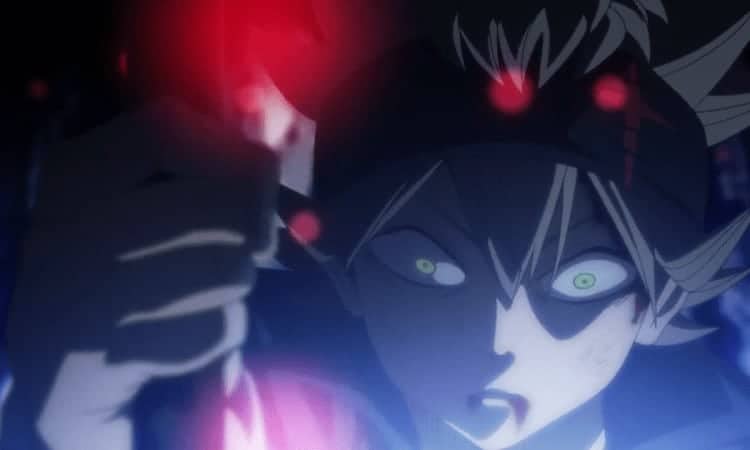by Hugo Hamon
After 24 years away from home, director Elvis A-Liang Lu returns to his family in a rural area of southwestern Taiwan, and confronts his parents and brother with their superstitious beliefs. Through this touching family portrait, ‘A Holy Family' reveals a slice of Taiwan's marginalized society and its everyday problems, from the harshness of rural life to the refuge of superstition. Selected for numerous documentary film festivals (notably in France: Visions du Réel, États généraux du film documentaire, FIPADOC etc.), ‘A Holy Family' is the director's second movie and certainly his most personal, the one in which he can't help but get involved.
A Holy Family is screening at Black Movie

It all starts with a phone call from A-Liang's mother, urging him to come back home to discuss funeral arrangements. At first, he plans to help her take funeral portraits, but he soon begins filming their daily lives as he discovers their religious practices. His older brother, A-Zhi, was recognized as a medium at the age of 12. Since then, the entire family has become intensely religious and superstitious. As they struggle with the failure of their farming business, poor harvests, mounting debts and health problems, their only hope and solace is the altar of 12 Taoist deities in their home and the constant stream of religious rituals performed there.
A-Liang disagrees with his family's religious practices and blind faith in never-ending life-changing miracles. By asking very open, direct questions that they are obviously not used to answering, he tries to push them to their limits. What was at first a way for him to understand his family, quickly becomes pure opposition: “Do you think the gods ever helped our family?”, “Are they really gods?”, etc. He is particularly aggressive with the aging patriarch, who has squandered most of the family's wealth gambling, looking in the incense patterns the winning lottery numbers, and with his mother, who treats her back problems with hot compresses as the gods recommend, instead of going to the doctor. His anger at them hides how much their vulnerable situation distresses him.
The movie consists mainly of static shots, behind which the director sometimes asks questions, witnesses everyday life, including the silences and embarrassing scenes, the tears of A-Zhi's son, the mother's difficulty in climbing the stairs. The silences between the family members fill the space. In a context where affection and emotion are rarely expressed, the unspoken tensions and lack of interaction visually express the difficulties and suffering of a large part of the Taiwanese population, far from the stereotypical images of Taipei.
There is also an introspection aspect to the director's personal approach. As the film progresses, he becomes more and more involved. The little phrases that he throws out of the frame to trick his family fade, and he appears more and more in the frame, interacting more and more with them. Eventually, a second camera is used. The fear of death loosens tongues, and a few moments of looking back at the past – their parents' marriage, their childhood, the reasons for A-Liang's departure – allow everyone to express their regrets. The family fracture at the beginning of the movie gradually dissolves as the desire to teach fades and compassion takes over.
The camera becomes a bridge in this exercise of reconciliation, but also an indispensable pillar in the filiation process of the director, overwhelmed by a torrent of contradictory emotions in the face of a dysfunctional family that has always entrusted its destiny to the bets of money and the will of the gods. The director plunges into a measured, tender and delicate look at this invisible bond that resonates within him and in his identity-building.
In short, “A Holy Family” is a movie about family and the passage of time. As A-Liang reconnects with his family, the setting evolves from conflict to complicity and respect. Thus, what begins as an indictment of superstition ends up as a work of family reconciliation, a chronicle of an old couple's last routine gestures, and a personal attempt to understand the meaning of each other's beliefs and the harshness of their lives. It is an intimate journey of homecoming, a portrait of rekindled family ties despite differences, and an unflinching tale of self-discovery through filmmaking.
















